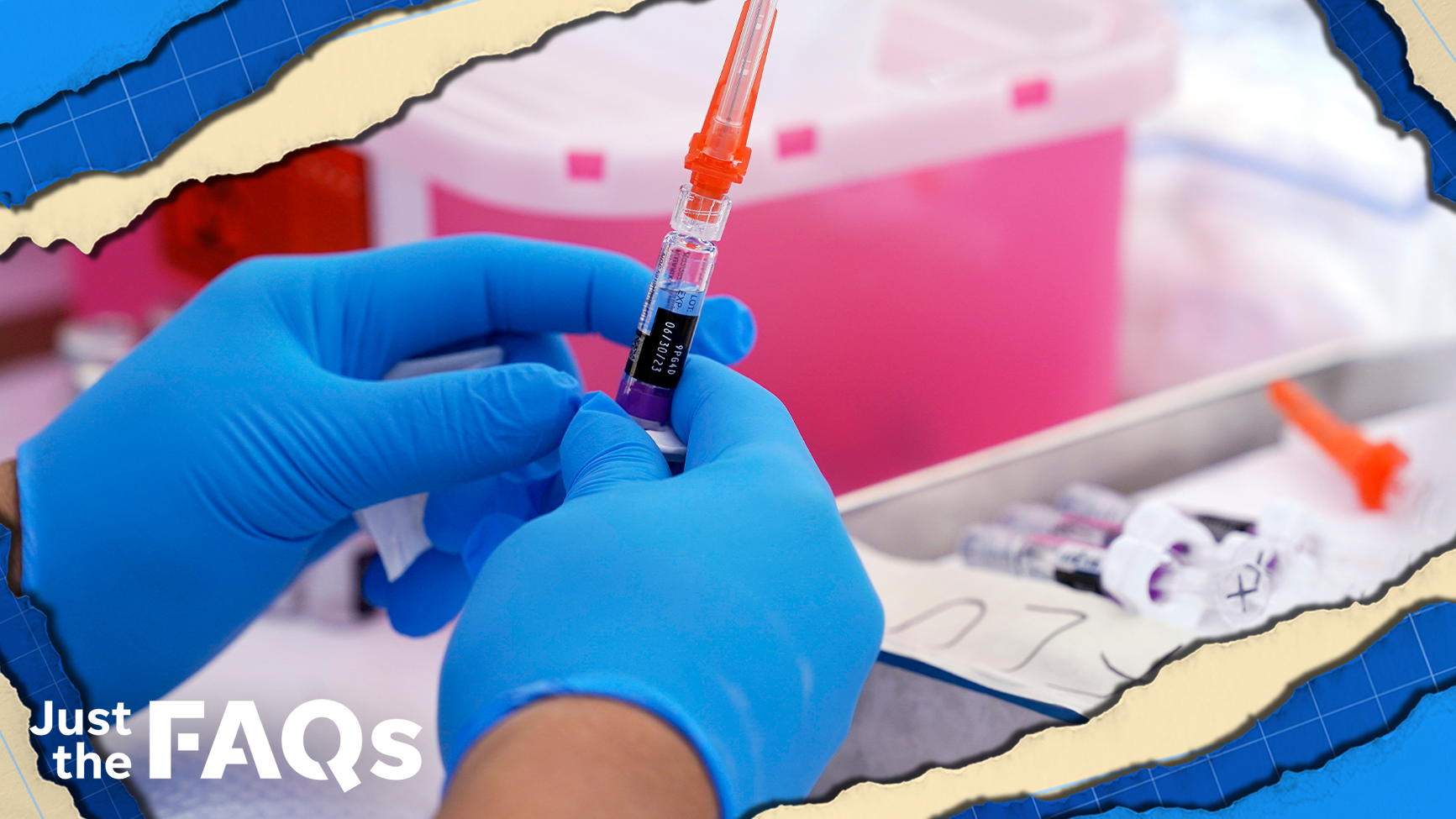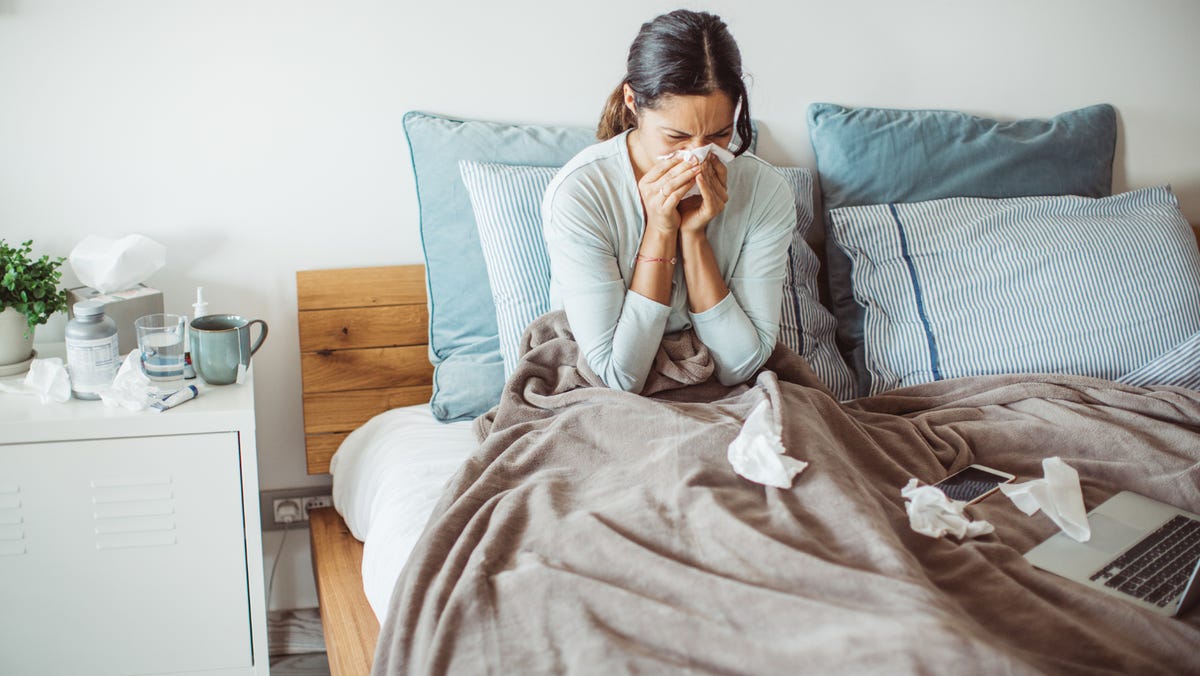
And yes, it may have something to do with the fact that many people have been wearing masks and avoiding others for the past two-plus years.
But that’s far from the whole story.
Researchers say there are a host of factors influencing the current misery, including chance, the specifics of the immune system and direct and indirect effects of the pandemic.
Why are so many people sick right now?
Viral outbreaks naturally vary, with some years worse than others, but COVID-19 certainly effected the natural patterns, said Dr. Ofer Levy, a pediatric infectious disease specialist who directs the Precision Vaccines Program at Boston Children’s Hospital.
“It seems very likely to me that everything that happened with the pandemic with travel, etc., has altered some of these patterns,” he said.
The peak of respiratory syncytial virus, more commonly known as RSV seems to have passed – though it’s not clear whether it arrived earlier than normal this year, as it did in 2021, when it peaked in the summer, or whether there will be another spike later in the season.
America’s flu outbreak also might simply be earlier this year rather than harsher, as happened in Australia over the summer, said Michael Osterholm, an epidemiologist who directs the Center for Infectious Disease Research and Policy at the University of Minnesota.
The flu may already have topped out in a few places, with hospitalizations falling last week from the week before.
Although the flu vaccine appears to be a good match for the circulating strains this year, the most commonly circulating strain, H3N2, is known to cause more serious disease.
And “vaccine fatigue” has kept flu vaccination rates below average this year. Only 26% of American adults and 42.5% of children had gotten a flu shot as of Dec. 9.
“The dynamics are really complicated, so it’s not surprising that we see something different this year,” said Al Ozonoff, a pediatric infectious disease researcher at Boston Children’s Hospital and the Broad Institute of Harvard and MIT. “COVID really threw all of the standard relationships between viruses out of whack and it will take a little bit of time for them to recalibrate and fall into a stable equilibrium.”
Are we done with COVID-19?
Unfortunately, the pandemic isn’t over yet and it’s not clear when it will be.
“We’re seeing an unusual increase,” Osterholm said, with deaths from COVID-19 up 71% over the last three weeks and related hospital and ICU bed usage up 22%. “The bottom line is this is not done,” he said.
Although the virus continues to evolve, so far, researchers aren’t worried about the newer variants.
Booster shots are targeted to both the original virus and the BA.5 variant that circulated this year, but current variants aren’t that distant, said Dr. Jeremy Luban, who studies pathogens at the UMass Chan Medical School.
Otherwise healthy people who have been vaccinated or infected over the past year should have good protection against severe disease, he said. “There is no evidence that the virus is evolving away from this immune protection.”
Masking may be having a small impact
If previous masking factors into the current disease outbreak, Ozonoff doesn’t think it has a big effect. Studies aren’t showing big differences between areas that had strict masking and those where masking wasn’t enforced.
But it’s theoretically possible.
Typically, people are exposed to the flu when infected or vaccinated. They might get a natural boost if exposed to a similar strain some time later. Because people wore masks and avoided crowds for the past few years, the strain of flu and other viruses circulating now might be different enough to make us sick.
“For a pathogen like RSV, we rely on annual or multiple times a year exposures to RSV to boost our immunity on a very regular basis,” said Dr. Kristin Moffitt, an expert in pediatric infectious diseases at Boston Children’s Hospital. “Prior to the pandemic, we were all experiencing that.”
Masking preventing those minor exposures and might be one of a number of factors involved in the current disease outbreak.
“We sort of had this perfect storm,” she said, where “the population-level immunity needed to keep at bay or to keep infections from skyrocketing was lower than it normally would have been and at the same time everybody returned, unmasked fully to normal around the same time as the weather was starting to get cold.”
Did COVID-19 weaken our immune systems?
Again, this is theoretically possible but unlikely to be the whole explanation, said Dr. Duane Wesemann, who researches antibodies at the Brigham and Women’s Hospital and Harvard Medical School, both in Boston.
The immune system records its exposures through antibodies, so having COVID-19 probably changed it in some way. But it’s also robust enough to handle a few years of isolation, Wesemann said.
COVID-19 was a more dire threat than the flu, RSV or the common cold, so it made sense to protect ourselves against it – even if it might have made us slightly more vulnerable to less serious diseases now, he said.
“We’re still winning here,” he siad.
How can I avoid getting sick?
The same strategies that worked during the height of the COVID-19 pandemic still work, and layering them will be more effective than just doing one, the experts said.
Those strategies include vaccinations. Both the flu and COVID-19 vaccines are safe and effective at preventing severe disease, though not all infections.
Masking can help, particularly indoors in crowded spaces with poor ventilation, Levy said.
Stay home if you’re not feeling well.
Wash hands frequently with soap and for at least 20 seconds.
For family gatherings, especially if they include babies, or people who are older or immunocompromised, it makes sense to take a rapid COVID-19 test just before getting together. Everyone with insurance is entitled to eight free tests a month and the federal government has just reopened its portal covid.gov/tests to allow people to request four additional tests by mail.
